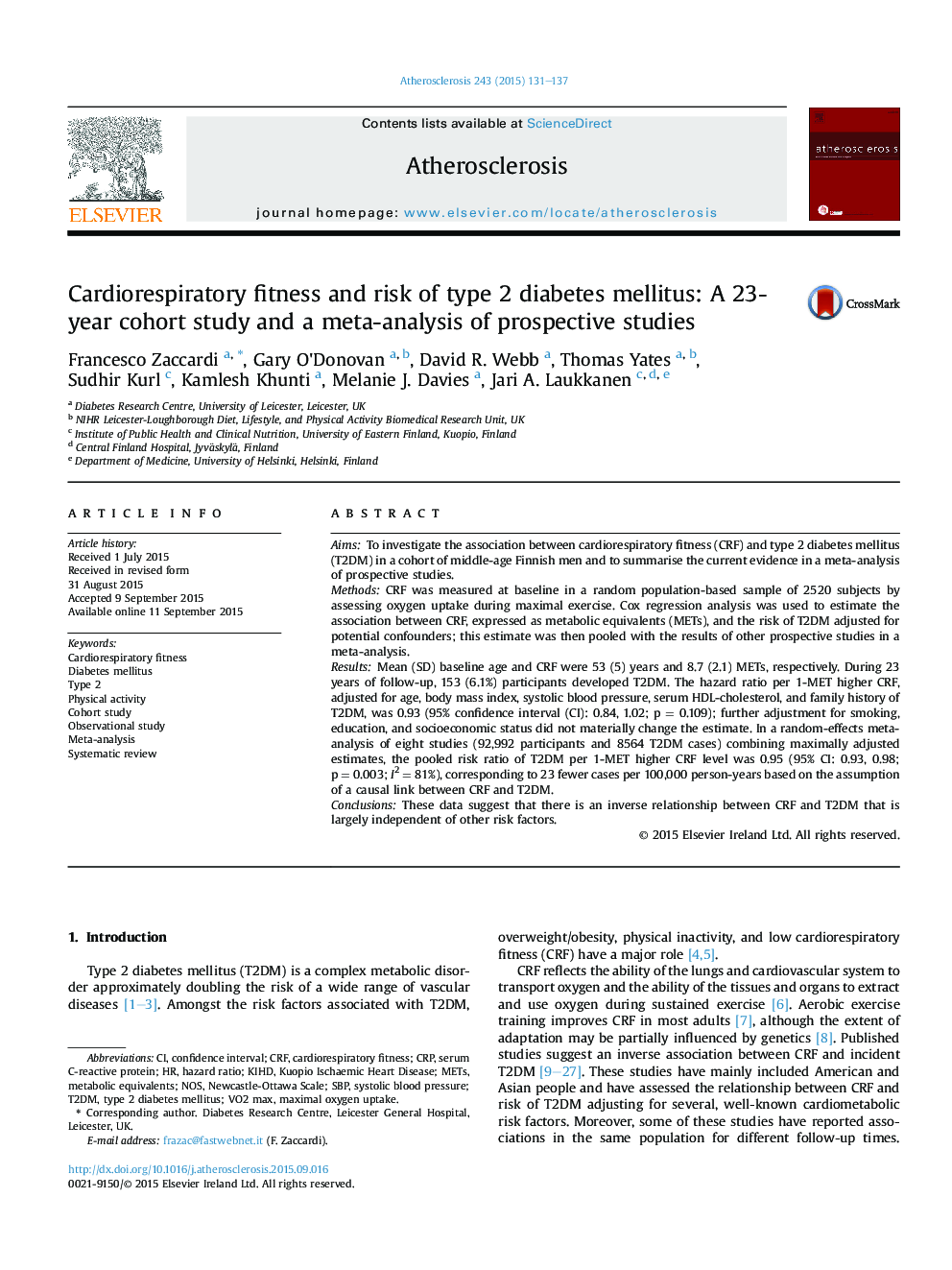| کد مقاله | کد نشریه | سال انتشار | مقاله انگلیسی | نسخه تمام متن |
|---|---|---|---|---|
| 5944255 | 1172342 | 2015 | 7 صفحه PDF | دانلود رایگان |
- Higher cardiorespiratory fitness (CRF) has been consistently associated with a lower CVD risk.
- The association between CRF and risk of type 2 diabetes has been inconsistently reported.
- Available prospective data suggest an inverse association between CRF and diabetes risk.
- CRF is more strongly associated with CVD than type 2 diabetes.
AimsTo investigate the association between cardiorespiratory fitness (CRF) and type 2 diabetes mellitus (T2DM) in a cohort of middle-age Finnish men and to summarise the current evidence in a meta-analysis of prospective studies.MethodsCRF was measured at baseline in a random population-based sample of 2520 subjects by assessing oxygen uptake during maximal exercise. Cox regression analysis was used to estimate the association between CRF, expressed as metabolic equivalents (METs), and the risk of T2DM adjusted for potential confounders; this estimate was then pooled with the results of other prospective studies in a meta-analysis.ResultsMean (SD) baseline age and CRF were 53 (5) years and 8.7 (2.1) METs, respectively. During 23 years of follow-up, 153 (6.1%) participants developed T2DM. The hazard ratio per 1-MET higher CRF, adjusted for age, body mass index, systolic blood pressure, serum HDL-cholesterol, and family history of T2DM, was 0.93 (95% confidence interval (CI): 0.84, 1.02; p = 0.109); further adjustment for smoking, education, and socioeconomic status did not materially change the estimate. In a random-effects meta-analysis of eight studies (92,992 participants and 8564 T2DM cases) combining maximally adjusted estimates, the pooled risk ratio of T2DM per 1-MET higher CRF level was 0.95 (95% CI: 0.93, 0.98; p = 0.003; I2 = 81%), corresponding to 23 fewer cases per 100,000 person-years based on the assumption of a causal link between CRF and T2DM.ConclusionsThese data suggest that there is an inverse relationship between CRF and T2DM that is largely independent of other risk factors.
Journal: Atherosclerosis - Volume 243, Issue 1, November 2015, Pages 131-137
